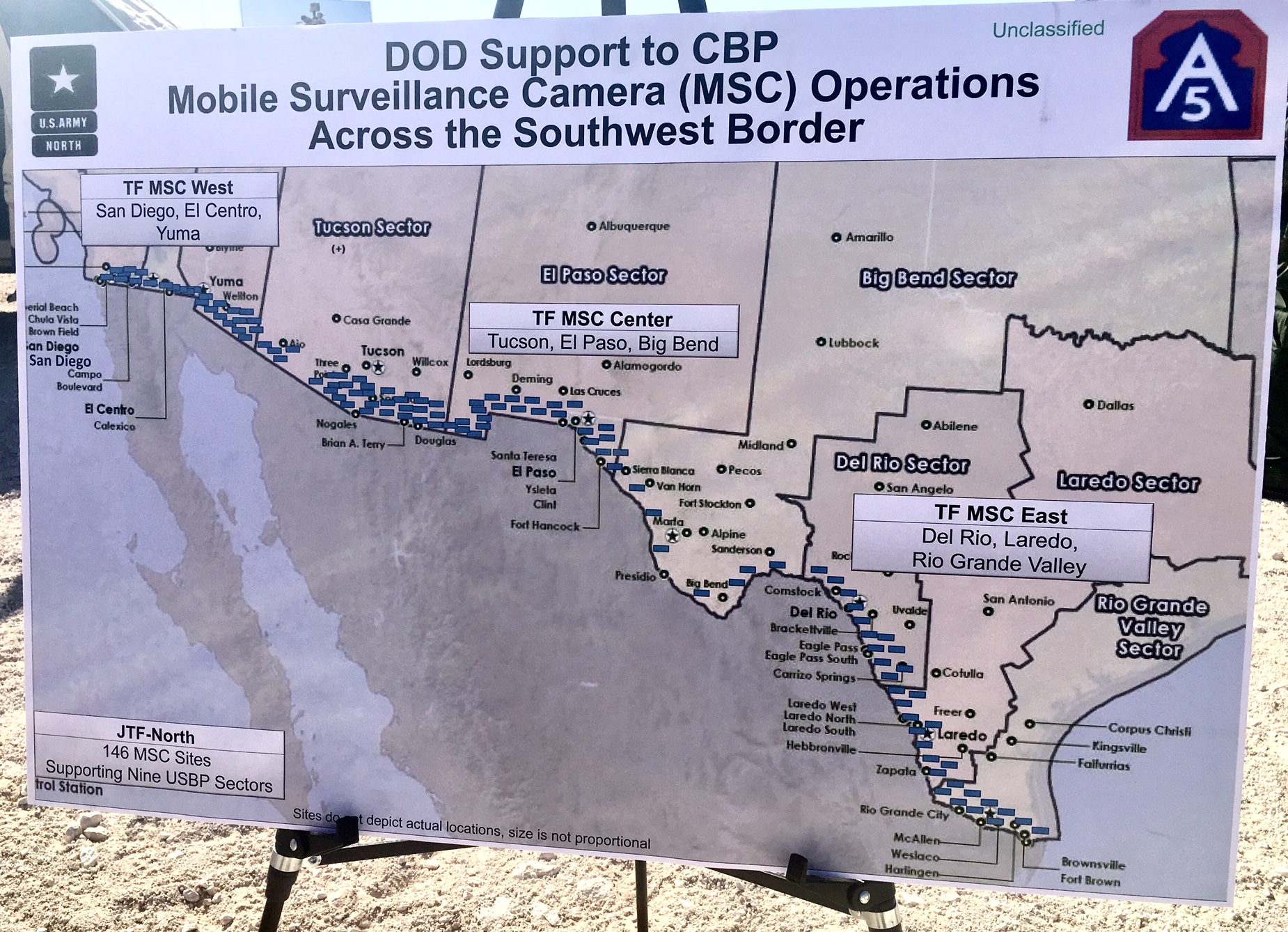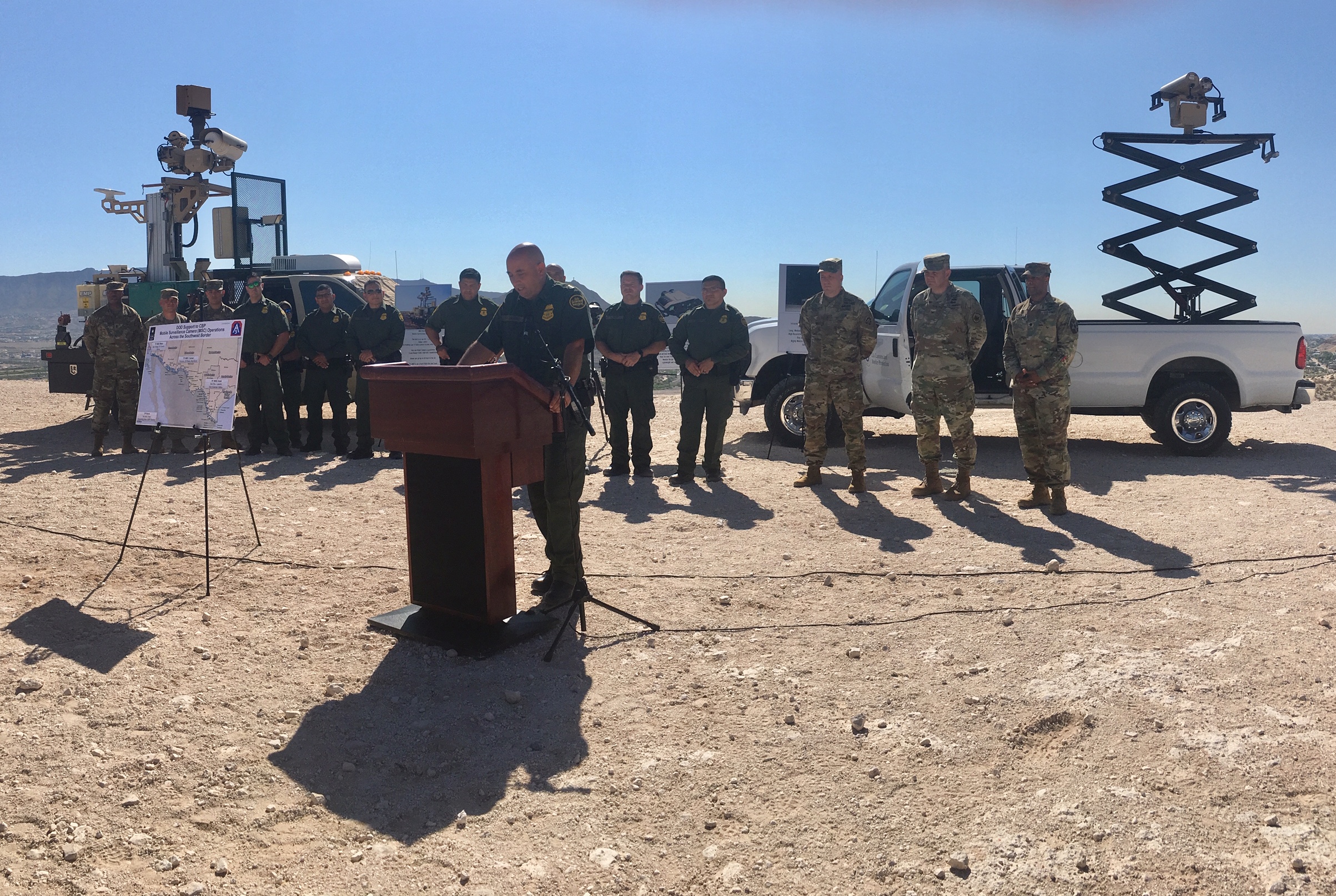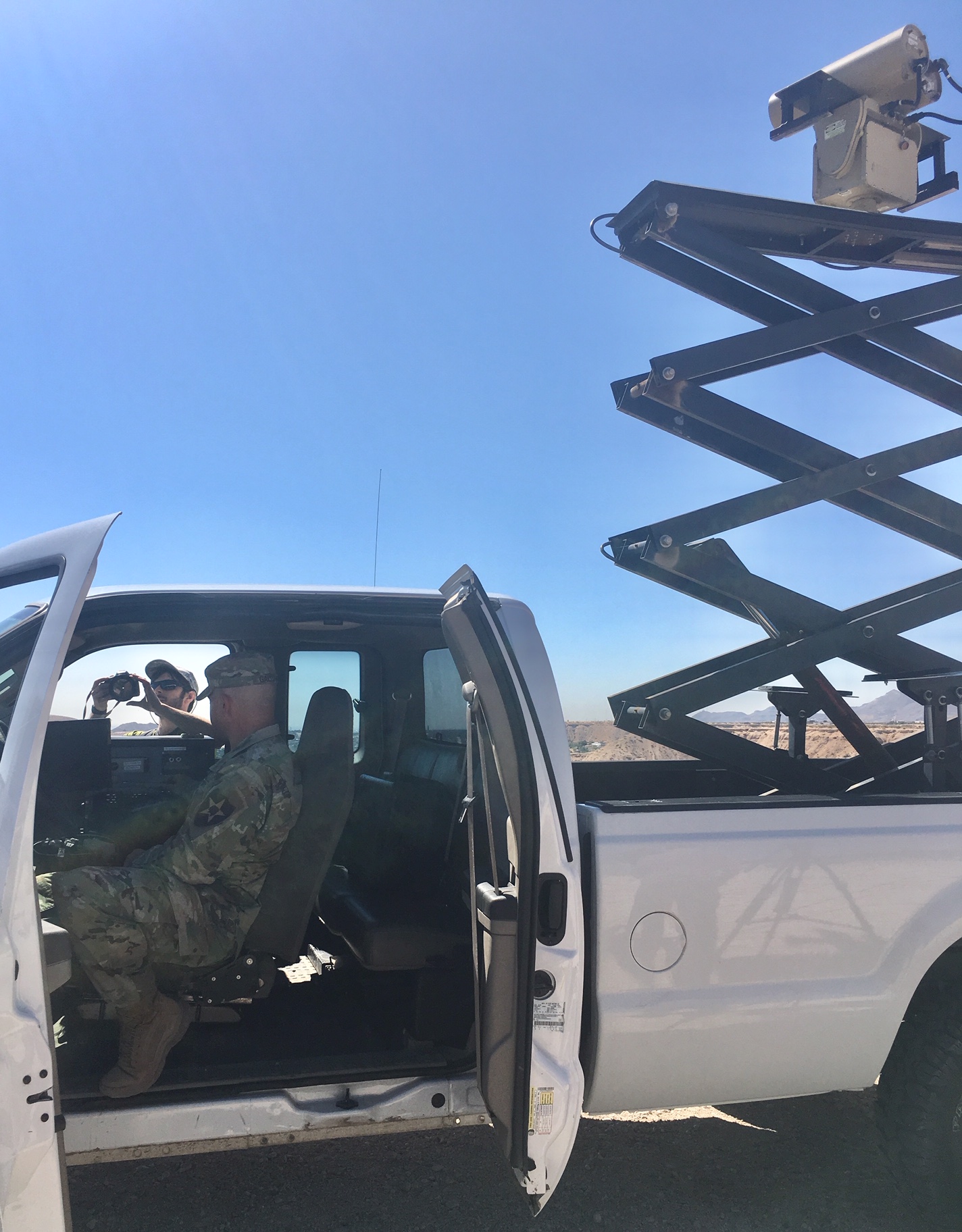EL PASO, Texas — More than half of the active-duty troops deployed to the U.S.-Mexico border are quietly carrying out their assigned missions as the “eyes and ears“ of the Border Patrol, as agents focus resources to responding to constant migrant interdictions.
Roughly 3,900 active-duty service members and National Guard troops remain deployed to the southern border as of early June. Approximately 1,200 of the 2,000 Army soldiers and Marines working in the four border states are on the front lines of the action. These troops operate more than 150 pickup trucks that carry state-of-the-art Mobile Surveillance Capabilities systems, scanning up to 25 miles in the distance day and night for human or dug smuggling activity.
“We’re here at CBP’s request and make no mistake about it, Customs and Border Protection is in the lead. We’re in support and really look at ourselves as a force multiplier for them,” Brig. Gen. Walter Duzzny, deputy commanding general of U.S. Army North, told reporters at a briefing atop a mountain in the desert Thursday morning. “We’re the eyes and ears from those MSC position along the southwest border allowing them to conduct their mission.”

The troops are back-filling jobs Border Patrol agents are supposed to be doing because agents have been pulled to the field to apprehend illegal crossers and process them at local stations where they are held before being transferred to Immigration and Customs Enforcement, according to Agent Julian Najera, who is assigned to Border Patrol’s Santa Teresa station in the El Paso sector.
“If we were not here manning these vehicles, they would not be manned,” added Army Col. Catherine Wilkinson, a spokeswoman for U.S. Army North.
The mobile surveillance operations began in February, four months after the White House initially sent 5,200 active-duty troops to the border to supplement work being done by the National Guard. Duzzny announced Thursday this specific mobile surveillance operation in Texas, New Mexico, Arizona, and California has led to more than 13,000 apprehensions of illegal border crossers and the seizure of 3,000 pounds of marijuana in four months.
Border Patrol’s El Paso region, where the briefing on the project was held, has 10 units to use for surveillance. The other systems are spread across Border Patrol’s other eight regions along the U.S.-Mexico border.
Soldiers and Marines must complete a 40-hour training program prior to the assignment, which also includes operating the Customs and Border Protection-owned Ford F-150 trucks. The trucks are manned by two service members in 10-hour shifts, 24 hours a day, seven days a week.

Customs and Border Protection dictates where each truck is assigned and switches up locations every two days.
“These sites are strategic sites that provide observation over known avenues of approach to our border,” said Duzzny.
Najera said two companies, Flir and Telephonics, make the systems used on all trucks nationwide. The daytime cameras can depict images in color and the nighttime cameras use infrared lenses.
Daniel Aguilar is a private in the Army and works in the El Paso region manning the cameras. He said it’s not always possible to tell how many people are in a group or if an image is a large animal or a person.
“If we see any suspicious activity, we immediately call any nearby Border Patrol agent,” said Aguilar.
Troops carry side arms for self-defense. Aguilar said he’s never had to use it nor has he been in a threatening situation. The law enforcement agents are no more than 15 minutes away and respond to every call from the MSC outposts, per Customs and Border Protection standards.

Another MSC operator, Dale Galloway, a staff sergeant in the Army, said he calls Border Patrol every 15 minutes because that is how often he witnesses groups of people illegally crossing from Mexico into the U.S.
The mission has been funded through September and Duzzny said both agencies are regularly assessing the mission’s effectiveness. Border Patrol agents said they could not speak to whether it would continue in fiscal 2020, which starts in October, and said it would be up to Customs and Border Protection and Department of Homeland Security officials in Washington.
“I’m a veteran of three combat tours and have seen soldiers and Marines conducting lots of missions in lots of different places but I’m just as proud of what our soldiers are doing here and the impact they’re having on a day-to-day basis,” said Duzzny, a 29-year member of the Army.
Other Title 10 forces, or active-duty deployments, are providing aerial, engineering, medical, and military police support on the border.

